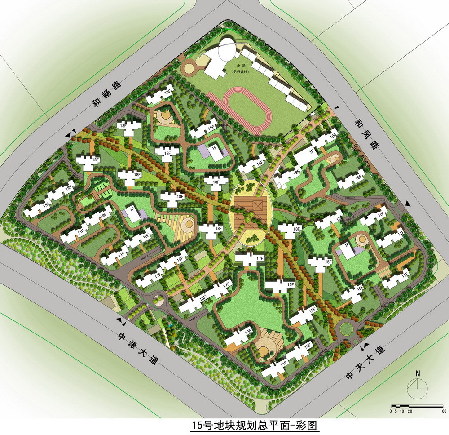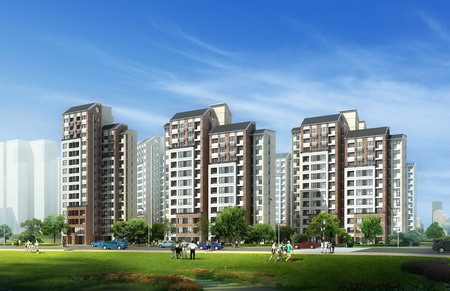|
|

|
| Image of site plan |
 |
| Image of phase 1 street view |
The first phase of construction for a public housing development began on Wednesday in the Sino-Singaporean Tianjin Eco-city, Singaporean media Lianhezaobao said.
The Tianjin Eco-City, initiated in 2007, is a landmark bilateral project between China and Singapore backed by private-sector investment and development.
The Singaporean Ministry of National Development (MND) said the construction of public housing is "a significant milestone in the development of the Eco-city", as one of the features of the Eco-city is its emphasis on promoting and strengthening social harmony, in addition to economic vibrancy and environmental sustainability.
The public houses will be sold to local low-income residents who may not be able to afford private housing and applicants must work in the Eco-city, according to Tianjin authorities. But specific policies regarding the sales and management of the housing are still being finalized.
"Our aim is to develop inclusive, close-knit communities with strong communal bonds that cut across social and economic demographics in the Eco-city. Public housing is key to the promotion of social harmony among residents", MND said in a release in its website.
The housing project is located in the 4-square-km start-up area of the Eco-city. Designed by Surbana International Consultants and developed by the Tianjin Eco-city Administrative Committee, the project will comprise of 569 units, each of which is 55 square meters, spread out in 7 blocks, according to the MND.
All the buildings will be designed to comply with Green Building Evaluation Standards, which have been adopted in the Eco-city. Solar panels will be installed in all blocks to generate solar power, which will cut energy consumption by 70% and fuel as much as 60% of water heating.
MND said the first phase is scheduled be completed in May and there will a total of around 3000 units of houses when all phases are completed, accounting for 20 percent of the accommodation available in the Eco-city.
The Chinese government aims to build a new housing model to ease China’s soaring housing prices and meet the housing needs of low and middle incomers in collaboration with its Singaporean counterpart, learning from bilateral experience in building affordable housing.
Today, about 85 percent of Singaporeans live in affordable, quality flats developed by the Singaporean government.
By Guo Changdong |

